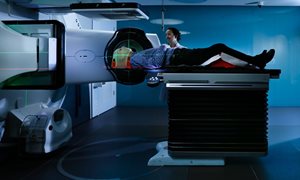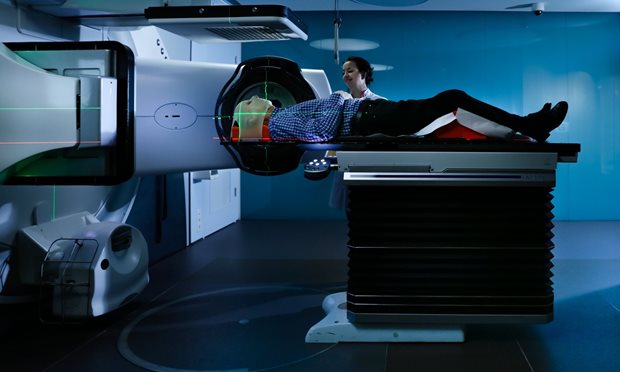Techniques Radiotherapy & OncoImmunology Laboratory
Radiotherapy & OncoImmunology Laboratory: linkThe biology of tumors is studied at the macroscopic (PET) and microscopic (cell, subcellular) level. The aim is to compare different functional imaging modalities for the same tumor.
The focus is on:
- Quantitative immunohistochemistry
- Cell culture systems
- Molecular Immunology
Quantitative immunohistochemistry
The backbone of this system are:- the vascular architecture (9F1 or CD31/24)
- tumor blood perfusion (Hoechst 33342)
- exogeneous markers/indicators of hypoxia (CA-IX, pimonidazole)
- proliferation (BrdUrd, IdUrd, Ki67)
- growth factors ((p)EGFR, (p)AKT)
- DNA damage (gamma-H2AX, 53BP1)
Quantification
Components of our digital imaging systems:- multi-color fluorescence microscopy
- computer-controlled scanning and imaging system:
- CCD camera
- motorised scanning stage
- image acquisition and analysis software
Cell culture systems
Our laboratory has permission for genetically modified organisms ('ML-II').The facilities are:
- Western Blotting
- Isolation of RNA and DNA
- Horizontal gel electrophoreses
- Incubations at 0.1-20% oxygen (Hypoxystation)
Molecular Immunology
Information will be given shortly.Collaborations
Netherlands
- Radboud university medical center, Dept. of Radiology: Prof. dr. A. Heerschap
MR-imaging - Radboud university medical center, Dept. of Nuclear Medicine: Prof. dr. O.C. Boerman
PET-scanning - University of Maastricht, Dept. of Experimental Radiation Oncology: Prof. dr. Ph. Lambin
Hypoxic cytotoxins
Abroad
- University of Aarhus: M. Busk
Comparison of AZA PET and IHC - University of Oslo: D.R. Olsen & K. Roe
Comparison of hypoxia/perfusion imaging with functional MRI - University of Oxford: Dr. E.J. Bernhard
Mechanisms that contribute to radiation survival of tumour cells - University of Hamburg/Technische Universitat Dresden: Prof. dr. M. Baumann
Molecular targeting of tumors during irradiation - University of Auckland (NZ): Prof. W. Wilson
Enhancing tumour hypoxia for therapeutic gain - University of Chicago: Prof. G. Karczmar
High spectral and spatial resolution MR imaging, co-registration with tissue sections, EPR hypoxia imaging - University of North Carolina, Dept. Radiation Oncology: Prof. J.A. Raleigh
Hypoxic cell markers - Ontario Cancer Institut: Prof. dr. B. Wouters
Molecular basis of signalling pathways that influence tumor response - UT Southwestern Medical Center (Dallas, Texas): P.M. Medin
Tolerance of pig spinal cord for radiosurgery - University of Wisconsin: D.L. Wheeler & P.M. Harari
EGFR & IGFR blockers
Patient care
This department also offers patient care. read more (in Dutch)Getting there
Entrance: Radboudumc main entrance (hoofdingang)
Building: G
Floor: 0
Route: 874
Getting there
Visiting address
Radboudumc main entrance
Geert Grooteplein Zuid 10
6525 GA Nijmegen
Directions

Go to Geert Grooteplein Zuid 10

Enter building at: Radboudumc main entrance (hoofdingang)

Go to Building G, Floor 0 and follow route 874


